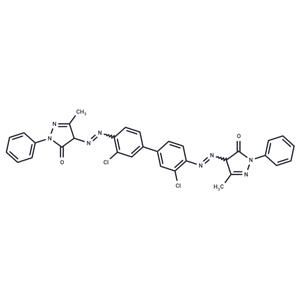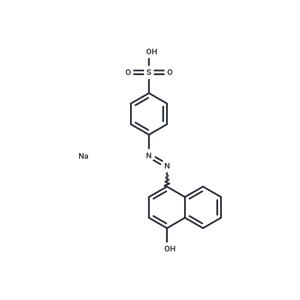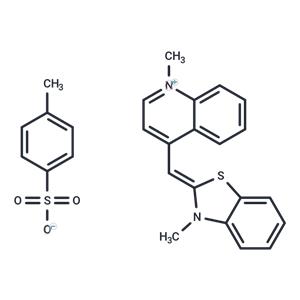
Acridine Orange hydrochloride NEW
| Price | $47 |
| Package | 100mg |
| Min. Order: | |
| Supply Ability: | 10g |
| Update Time: | 2025-06-19 |
Product Details
| Product Name: Acridine Orange hydrochloride | CAS No.: 65-61-2 |
| Purity: 99.3% | Supply Ability: 10g |
| Release date: 2025/06/19 |
Product Introduction
Bioactivity
| Name | Acridine Orange hydrochloride |
| Description | Acridine Orange hydrochloride is a fluorescent dye of cell-permeable. It binds to nucleic acids, resulting in an altered spectral emission.It is used as a supravital stain and in fluorescence cytochemistry. It may cause mutations in microorganisms. |
| Cell Research | Instructions I. Solution preparation 1. Stock solution: Acridine Orange hydrochloride is soluble in water, PBS or appropriate buffer. The commonly used stock solution concentration is 0.1-1 mg/mL. Store at 4°C away from light to prevent degradation. 2. Working solution: Dilute the stock solution to the required concentration. The commonly used concentration range is 0.1–10 μg/mL. The specific concentration is adjusted according to the experimental requirements. Freshly prepare the working solution to ensure the best effect. II. Nucleic acid staining method operation steps 1. Cell staining: 1) Soak the cell pellet or tissue section in the cell culture medium in the Acridine Orange working solution. The staining time is generally 5–30 minutes. The specific time can be optimized according to the sample. 2) If it is a suspended cell, you can directly add the Acridine Orange solution and incubate at room temperature. 3) If it is a fixed cell or tissue section, you need to perform an appropriate fixation process (such as formaldehyde fixation) first. 2. Washing after staining: Wash cells or sections with PBS or appropriate buffer to remove unbound dye. 3. Fluorescence microscopy: Observation under a fluorescence microscope, the excitation wavelength is usually 460–490 nm, and the emission wavelength is 515–530 nm (green fluorescence) and 590–620 nm (red fluorescence). Note: Acridine Orange emits red fluorescence when bound to DNA and green fluorescence when bound to RNA, which can distinguish these two nucleic acids. 4. Cell apoptosis and cell cycle detection 1) Apoptosis detection: Acridine Orange can be used to detect cell apoptosis. In early apoptotic cells, DNA staining shows green fluorescence, while in late apoptotic or necrotic cells, DNA shows red fluorescence. 2) Cell cycle analysis: After staining cells with Acridine Orange, the fluorescence intensity can be analyzed by flow cytometry to obtain information about the cell cycle stage (G0/G1, S, G2/M). Precautions 1. Photosensitivity: Acridine Orange is sensitive to light. Avoid exposing the dye to strong light and store it in a light-proof environment. 2. Toxicity: Acridine Orange may be toxic at high concentrations, and should be used with caution, especially in cell culture or microbiological experiments. The concentration should be reasonably controlled according to the experimental needs. 3. Contamination problem: Acridine Orange may cause microbial mutations. Therefore, in microbiological experiments, the corresponding experimental safety regulations must be followed. 4. Staining time: Too long a staining time may increase the background signal and affect the experimental results. Therefore, the staining time needs to be controlled. |
| Storage | keep away from direct sunlight | Powder: -20°C for 3 years | In solvent: -80°C for 1 year | Shipping with blue ice. |
| Solubility Information | DMSO : 3.02 mg/mL (10 mM), Sonication is recommended. H2O : 50 mg/mL (165.67 mM), Sonication and heating are recommended. |
| Keywords | Inhibitor | inhibit | Acridine Orange hydrochloride | Acridine Orange Hydrochloride | Acridine Orange |
| Related Compound Libraries | Bioactive Compound Library | Bioactive Compounds Library Max |
Company Profile Introduction
Target Molecule Corp. (TargetMol) is a global high-tech enterprise, headquartered in Boston, MA, specializing in chemical and biological research product and service to meet the research needs of global customers.
TargetMol has evolved into one of the biggest global compound library and small molecule suppliers and a customer based on 40+ countries. TargetMol offers over 80 types of compound libraries and a wide range of high-quality research chemicals including inhibitors, activator, natural compounds, peptides, inhibitory antibodies, and novel life-science kits, for laboratory and scientific use. Besides, virtual screening service is also available for customers who would like to conduct the computer-aided drug discovery.
You may like
Recommended supplier
| Product name | Price | Suppliers | Update time | |
|---|---|---|---|---|
| $47.00/100mg |
VIP3Y
|
TargetMol Chemicals Inc.
|
2025-06-19 | |
| $5.00/1KG |
VIP2Y
|
Henan Fengda Chemical Co., Ltd
|
2024-03-26 | |
| EUR212.00/1g |
VIP3Y
|
GERBU Biotechnik GmbH
|
2022-08-09 |
- Since: 2011-01-07
- Address: 36 Washington Street, Wellesley Hill, MA
INQUIRY







 United States
United States